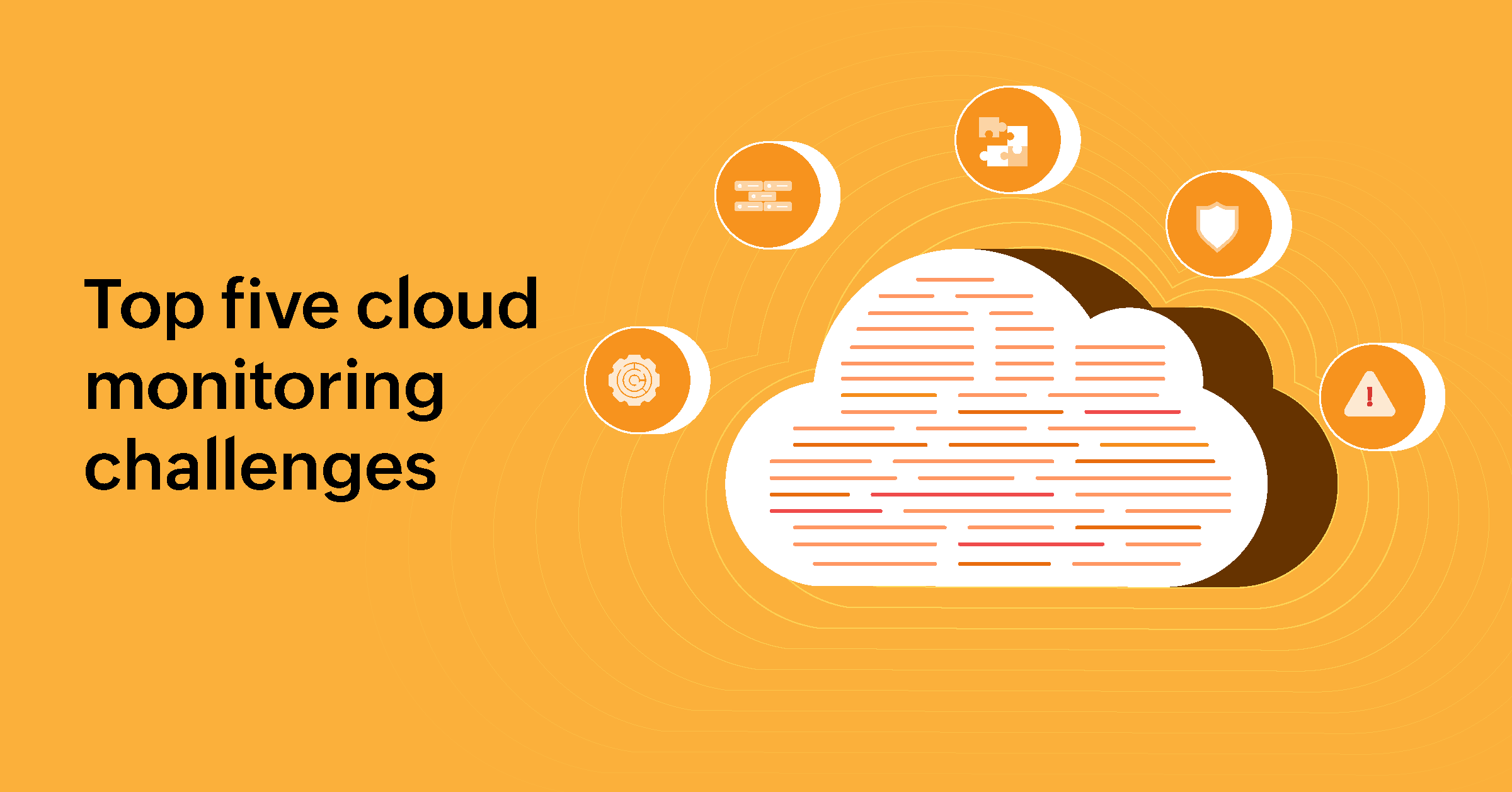Top five cloud monitoring challenges

Behind every cloud, there is exceptional monitoring. At least, there should be. However, the dynamic nature of the cloud, while its greatest strength, also poses a vulnerability by making it challenging to maintain visibility across all areas.
As the cloud becomes the backbone of many organizations' digital operations, robust and efficient monitoring is essential to identify and resolve issues before they affect the business. However, effective cloud monitoring presents unique challenges.
Let's take a look at some of the challenges that can arise while monitoring dynamic cloud environments.
1. Complexity of infrastructure and diverse technologies
The complexity of cloud infrastructure arises from its distributed nature across multiple services, instances, and geographic regions. Not only are there various services like IaaS, PaaS, SaaS, serverless computing, and databases—all having their unique monitoring needs—but also multi-cloud infrastructure with several cloud providers catering to organizations. Monitoring such diverse components presents challenges in tool compatibility, data aggregation across different APIs, and correlation of such huge volumes of data. Moreover, providing a unified view of performance while ensuring continuous monitoring, availability, and security across all components and cloud environments is also a significant challenge.
2. Scalability and performance monitoring
Scalability in cloud environments involves dynamically adjusting resources to meet fluctuating demands, which requires robust performance monitoring. Challenges arise in accurately predicting resource needs during scaling events and ensuring seamless performance across varying workloads. An effective monitoring tool must provide real-time insights into resource utilization, latency, and throughput to optimize scalability and maintain service levels. But this challenge is compounded by the presence of a multitude of services and instances, all of which must have visibility. It is particularly important in microservices architectures and hybrid cloud setups due to their complex interdependencies and varied deployment models.
3. Integration with legacy systems
Integrating cloud monitoring with legacy systems—especially as organizations move towards hybrid cloud setups—presents significant challenges. These challenges include bridging differences in technologies to ensure compatibility, maintaining synchronized data flows between environments for consistency, and minimizing performance impacts during scaling. Also, addressing security risks involves mitigating vulnerabilities introduced by integrating older systems with modern monitoring solutions is crucial. Overcoming these challenges requires expertise in managing diverse IT infrastructures effectively while ensuring seamless integration to maintain operational efficiency and meet organizational objectives securely.
4. Security and compliance
It is imperative to ensure security while monitoring the cloud to protect sensitive data and maintain system integrity. Not only this, but maintaining compliance with regulations like GDPR and HIPAA presents significant challenges, as these frameworks impose stringent requirements on data handling, storage, and protection. When monitoring the cloud, organizations need to implement robust security measures—such as encryption for data in transit and at rest, granular access controls, and effective identity management systems—to protect monitoring data and logs. Additionally, maintaining comprehensive audit trails and regular compliance reporting for monitored activities is essential, not only for regulatory compliance but also to maintain trust with stakeholders.
5. Data unification and alert management
In cloud monitoring, unifying data from multiple sources and managing alerts efficiently are critical challenges. Diverse monitoring tools from tool sprawl generate vast amounts of data, making it tricky to aggregate and standardize this information for coherent analysis. With multi tools for multi-cloud environments, it is easy for alert fatigue to kick in. Mitigating this challenge requires a unified platform to bring in all the data and view it under a single pane of glass, so that organizations can gain actionable insights and alerts that can be separated from the clutter, leading to operational efficiency.
Try ManageEngine Site24x7, a unified cloud monitoring tool for your multi-cloud environments
Site24x7 is a robust monitoring platform that solves most of your cloud monitoring challenges. It is a comprehensive cloud monitoring platform that supports AWS, Azure, and Google Cloud Platform, and offers real-time analytics, automated alert management, and centralized data aggregation from multi-cloud as well as hybrid cloud environments. You can integrate with various tools for improving operations, create customized dashboards to view the data you need in the way you want, and scale with your cloud environments. Sign up here today!
Comments (0)